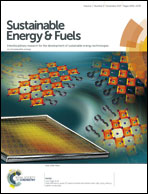Low-grade waste heat recovery using the reverse magnetocaloric effect
Abstract
According to a recent study by Lawrence Livermore National Laboratory, about 59.1 quadrillion BTU of energy produced in the United States is rejected to the atmosphere, mostly in the form of waste heat. A major portion of the total rejected thermal energy has a low temperature (less than 230 °C), classified as low-grade waste heat. This energy loss is the result of the fact that current thermal energy harvesting technologies, primarily thermoelectric generators, have poor efficiency at low temperature gradients and therefore are not cost-effective. This study investigates the possibility of low-grade waste heat recovery using magnetocaloric materials, which were developed mainly for magnetic refrigeration. The working principle of energy harvesters using the reverse magnetocaloric cycle is described using thermodynamic analysis and the performance of more than 60 magnetocaloric materials is compared under different operating temperature conditions. Considering the ambient atmosphere as the heat sink (temperature ∼ 25 °C), it was found that oxide-based magnetocaloric materials, such as La2/3Ba1/3MnO2.98 (Curie temperature ∼ 38 °C), have a working potential as high as 53.5 J per kg per cycle at a heat source temperature of 50 °C. The working potential increases to 77.4 J per kg per cycle, when the heat source temperature is increased to 75 °C, and it further increases to 87.8 J per kg per cycle at a heat source temperature of 100 °C. The working potential up to 100 J per kg per cycle at a heat source temperature of 100 °C was estimated for a few other materials with higher Curie temperature, such as Gd5Si4 (Curie temperature ∼ 65 °C) and La2/3Ba1/3MnO3 (Curie temperature ∼ 63 °C).

- This article is part of the themed collection: 2017 Sustainable Energy and Fuels HOT Articles


 Please wait while we load your content...
Please wait while we load your content...